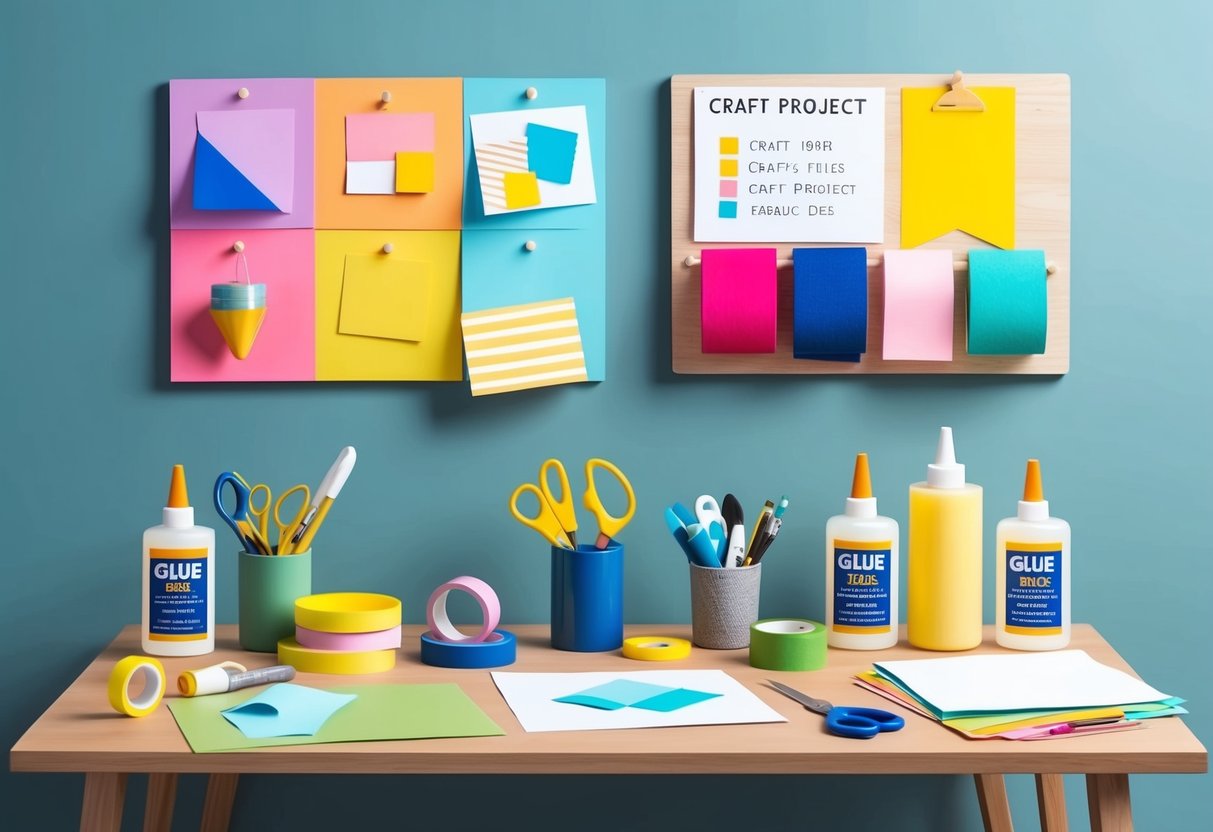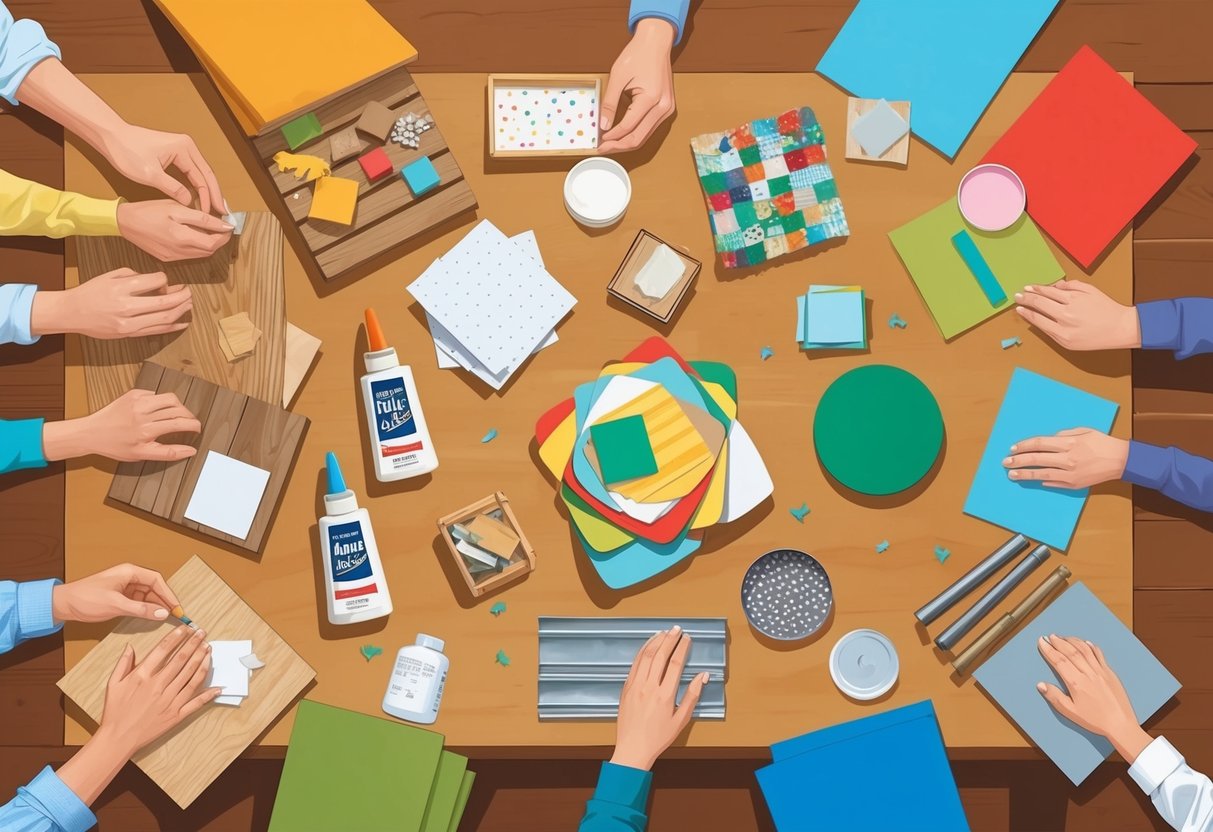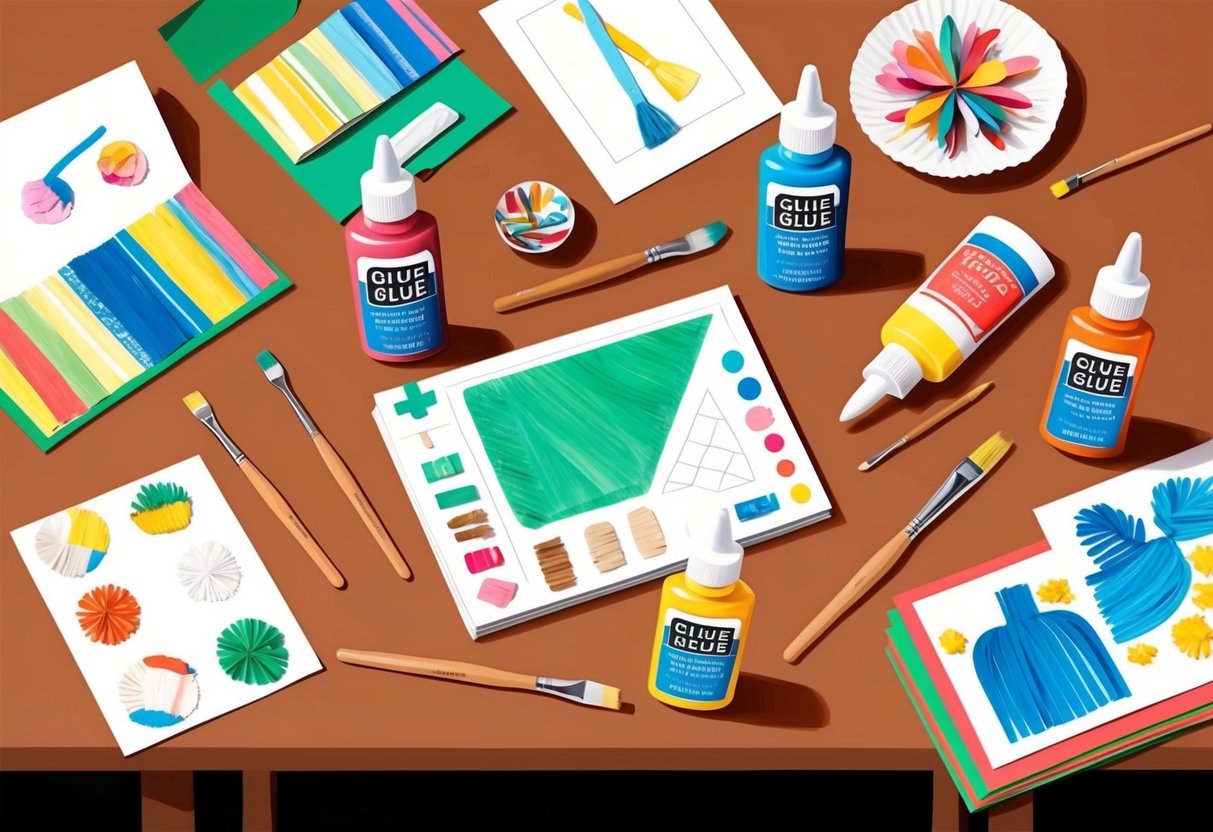
Factors to Consider When Selecting Glue

Selecting the right adhesive for craft projects requires attention to essential qualities. Drying speed, ability to fill gaps, and resistance to moisture are critical considerations that directly affect both durability and finish.
Drying Time
Drying time is a fundamental aspect when working with any type of glue. Fast-drying adhesives allow crafters to move quickly through projects without lengthy delays, which is ideal for time-sensitive work and layering materials.
Instant-bond adhesives and hot glue guns are examples that set in seconds to minutes, making them suitable for quick repairs and minor attachments. Slower-drying adhesives, such as PVA or wood glue, offer extended working time.
This is important for complex assemblies or when repositioning items before the bond sets. However, slow-setting glues may lengthen total project time, so choosing based on project scale and complexity is essential.
Refer to drying times listed on packaging or in guides like the Glue Guide for precise information. Environmental conditions, such as temperature and humidity, also influence how quickly glue dries.
Using the right adhesive for the conditions ensures better results and prevents bond failure.
Gap Filling Ability
Gap filling ability is essential for projects where surfaces do not fit together perfectly or when bonding porous materials. Some adhesives, such as epoxy and polyurethane glue, are specifically designed to fill small voids between materials and create strong, reinforced bonds even when contact points are uneven.
A visual comparison of gap filling abilities:
| Glue Type | Gap Filling Ability |
|---|---|
| PVA (White Glue) | Low |
| Epoxy | High |
| Polyurethane | High |
| Super Glue (CA) | Very Low |
Crafters working with rough or irregular surfaces, such as wood, ceramics, or mixed media, should choose an adhesive with reliable gap filling properties. This prevents weak spots and improves the overall durability and appearance of finished projects.
Water Resistance
Water resistance is a crucial property when crafting items for outdoor use, high-humidity environments, or washable objects. Most standard school or PVA glues offer little to no protection against moisture.
For projects exposed to water or steam, look for adhesives labeled as waterproof or water-resistant, such as construction adhesives, marine epoxy, or exterior wood glues. Some glues become completely waterproof only after full curing, so it’s important to allow adequate drying and curing time.
Comparing adhesive packaging or craft adhesive guides for water resistance ratings will help in selecting the right option. Water-resistant adhesives are essential for garden decorations, outdoor signage, and any craft likely to encounter spills or cleaning.
Application Methods and Ease of Use

Craft adhesives vary widely in application, drying time, and handling. Choosing the right method often depends on the material, project size, and desired finish.
Understanding the characteristics and best uses for each glue or adhesive can make crafting easier and improve final results.
Liquid Super Glues
Liquid super glues are well-known for fast bonding and strong adhesion. These cyanoacrylate-based adhesives work best on small surfaces and materials like plastic, metal, and ceramics.
Super glues typically come in bottles with narrow nozzles for precision application, making them ideal for repairs and detailed work. When using liquid super glue, a small amount goes a long way.
Users should apply a thin, even layer to one surface, then press materials together for several seconds. The bond usually sets within minutes, but optimal strength can take up to 24 hours.
It’s important to avoid excess glue, as overflow can stain or cloud surfaces. Super glues are not recommended for porous surfaces such as fabric or foam, as the liquid can soak in without bonding well.
They can also bond skin instantly, so protective gloves and careful handling are advised. For crafters needing speed and accuracy on non-porous materials, liquid super glues are an efficient choice.
For further information, see this adhesive guide.
Double-Sided Tape
Double-sided tape is valued for its clean, instant bonding with no drying time required. It’s often used for mounting photos, scrapbooking, cardmaking, and other paper crafts.
This adhesive comes in rolls or sheets, and can be cut to exact lengths as needed, providing a neat application every time. Application involves peeling off the backing and pressing the tape firmly onto one surface before attaching the second material.
Most double-sided tapes offer a permanent hold, but some are designed to be repositionable, allowing for adjustments during crafting. There is no mess, odor, or waiting period involved.
Double-sided tape is particularly well-suited for flat, lightweight materials like paper, cardstock, and thin fabrics. It does not provide structural support or work well on rough, uneven, or oily surfaces.
For projects that benefit from a clean appearance, double-sided tape reduces cleanup and simplifies the crafting process. Learn more from this detailed overview on adhesive choices.
General-Purpose Adhesive
General-purpose adhesives offer flexibility across many craft projects. These options, such as white glue or tacky glue, adhere to paper, wood, fabric, and some plastics.
Most come in bottles with squeezable tips or brush applicators, making them easy to use for both precision work and broader surfaces. Application usually involves spreading a moderate amount of adhesive and attaching the parts, with some adjustment time before setting.
Drying can take anywhere from several minutes to an hour, depending on the brand and materials. Excess glue cleans off easily with a damp cloth while wet.
General-purpose adhesives are safe, low-odor, and easy for crafters of all skill levels to handle. They are rarely suitable for metal, glass, or heavy-duty tasks, but excel in everyday crafting and school projects.
The adaptability of these glues makes them a staple for hobbyists seeking a reliable, versatile adhesive. Broader insights are provided in this comprehensive DIY glue guide.



